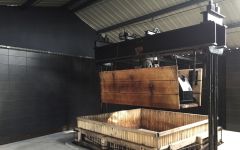Jacquesson Avize Brut Grand Cru 2000
-
Robert
Parker


Product Details
Your Rating
Somm Note
Winemaker Notes
Professional Ratings
-
Robert Parker's Wine Advocate
The 2000 Brut Avize Grand Cru reveals sweet, open aromatics that lead to a generous core of ripe fruit that blossoms on the palate with highly perfumed, almost candied qualities. This rich, round wine possesses superb energy and length. While the 2000 doesn’t quite have the focus of the finest vintages of this wine, it is fairly accessible at this stage. The 2000 Brut Avize Grand Cru is 100% Chardonnay sourced from the Champ Gain, La Fosse and Nemery vineyards. This is Lot AV00.4, disgorged in the 1st quarter of 2008. Simply put, this is a gorgeous wine.





Champagne Jacquesson was founded in 1798 by Memmie Jacquesson and he did so well that Napoléon gave him a medal. The business left family hands toward the end of the 1800s, and eventually was bought by the Chiquet family in 1974. Today Jacquesson is jointly managed by Jean-Hervé and Laurent Chiquet. Jean-Hervé, once the cellar master, now primarily runs the commercial aspects of the business, while his younger brother Laurent runs the production side and has taken the role of chef de cave. In a given year, Champagne Jacquesson farms between 69 and 76 acres in the grand cru villages of Aÿ, Avize, and Oiry, and in the premier cru villages of Hautvillers, Dizy, and Mareuil-sur-Aÿ. The acres vary because the house owns 69 acres with the option to take farming contracts on as many as 7 more, and Jacquesson does all the farming on whatever it contracts for.
Sustainable practices are the norm here, and one-third of Jacquesson’s vineyards are certified organic. The brothers use vertical presses rather than more abusive horizontal presses. The juice flows by gravity into steel tanks for 24 hours of settling, after which it is transferred to large neutral wood casks (foudres) for several months to undergo alcoholic and malolactic fermentations. The dosage is typically in the extra-brut range of one to six grams of sugar per liter.
The aim of the 7-series is to emphasize the best qualities of a given year, rather than to dumb down individual vintages to make a uniform non-vintage. It’s worth noting that this series is being aged progressively longer in bottle, so that by the time Cuvée 734 was released in May, 2010 it had a full three years of bottle age, including four months after disgorgement. Jean-Hervé and Laurent had decided that the 7-series would be Jacquesson’s best blended wine. Going forward, the vintage wines would be limited to the four single-vineyard wines, made only in good years and in very limited numbers, while the house’s one blend would be the 7-series. The requirements for the vintage-dated single vineyards are simple: the wine must have a distinct personality, one that reflects its terroir, and it is not needed in the 7-series blend.

Representing the topmost expression of a Champagne house, a vintage Champagne is one made from the produce of a single, superior harvest year. Vintage Champagnes account for a mere 5% of total Champagne production and are produced about three times in a decade. Champagne is typically made as a blend of multiple years in order to preserve the house style; these will have non-vintage, or simply, NV on the label. The term, "vintage," as it applies to all wine, simply means a single harvest year.

Associated with luxury, celebration, and romance, the region, Champagne, is home to the world’s most prized sparkling wine. In order to bear the label, ‘Champagne’, a sparkling wine must originate from this northeastern region of France—called Champagne—and adhere to strict quality standards. Made up of the three towns Reims, Épernay, and Aÿ, it was here that the traditional method of sparkling wine production was both invented and perfected, birthing a winemaking technique as well as a flavor profile that is now emulated worldwide.
Well-drained, limestone and chalky soil defines much of the region, which lend a mineral component to its wines. Champagne’s cold, continental climate promotes ample acidity in its grapes but weather differences from year to year can create significant variation between vintages. While vintage Champagnes are produced in exceptional years, non-vintage cuvées are produced annually from a blend of several years in order to produce Champagnes that maintain a consistent house style.
With nearly negligible exceptions, . These can be blended together or bottled as individual varietal Champagnes, depending on the final style of wine desired. Chardonnay, the only white variety, contributes freshness, elegance, lively acidity and notes of citrus, orchard fruit and white flowers. Pinot Noir and its relative Pinot Meunier, provide the backbone to many blends, adding structure, body and supple red fruit flavors. Wines with a large proportion of Pinot Meunier will be ready to drink earlier, while Pinot Noir contributes to longevity. Whether it is white or rosé, most Champagne is made from a blend of red and white grapes—and uniquely, rosé is often produce by blending together red and white wine. A Champagne made exclusively from Chardonnay will be labeled as ‘blanc de blancs,’ while ones comprised of only red grapes are called ‘blanc de noirs.’
